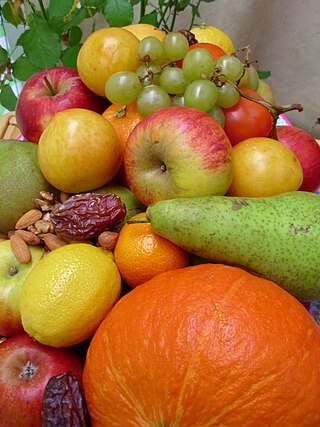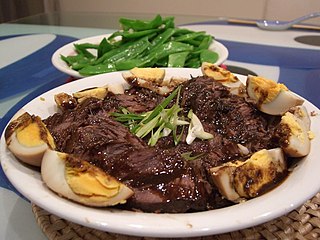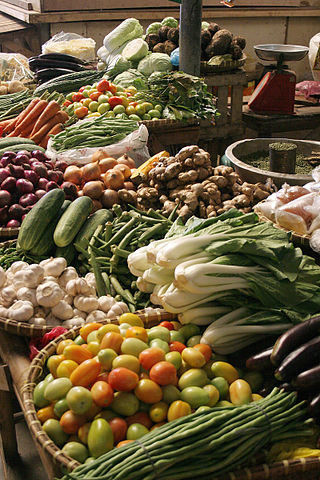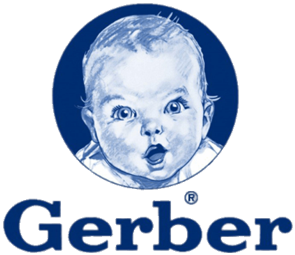
In botany, a fruit is the seed-bearing structure in flowering plants that is formed from the ovary after flowering.

Fruitarianism is a diet that consists primarily of consuming fruits and possibly nuts and seeds, but without any animal products. Fruitarian diets are subject to criticism and health concerns.

Hamsters are rodents belonging to the subfamily Cricetinae, which contains 19 species classified in seven genera. They have become established as popular small pets. The best-known species of hamster is the golden or Syrian hamster, which is the type most commonly kept as a pet. Other hamster species commonly kept as pets are the three species of dwarf hamster, Campbell's dwarf hamster, the winter white dwarf hamster and the Roborovski hamster.

Braising is a combination-cooking method that uses both wet and dry heats: typically, the food is first browned at a high temperature, then simmered in a covered pot in cooking liquid. It is similar to stewing, but braising is done with less liquid and usually used for larger cuts of meat. Braising of meat is often referred to as pot roasting, though some authors make a distinction between the two methods, based on whether additional liquid is added. Osso buco and coq au vin are well known braised meat dishes, and the technique can also be used to prepare fish, tempeh, tofu or fruits and vegetables.

Alice Louise Waters is an American chef, restaurateur, and author. In 1971, she opened Chez Panisse, a restaurant in Berkeley, California, famous for its role in creating the farm-to-table movement and for pioneering California cuisine.

California cuisine is a food movement that originated in Northern California. The cuisine focuses on dishes that are driven by local and sustainable ingredients with an attention to seasonality and an emphasis on the bounty of the region.
Ann Turner Cook was an American educator and mystery novelist who was best known as the model for the familiar Gerber Baby artwork, seen on baby food packages of the Gerber Products Company.

Baby food is any soft, easily consumed food other than breastmilk or infant formula that is made specifically for human babies between six months and two years old. The food comes in many varieties and flavors that are purchased ready-made from producers, or it may be table food eaten by the family that has been mashed or otherwise broken down.
The Gerber Baby is the trademark logo of the Gerber Products Company, an American purveyor of baby food and baby products. Drawn by artist Dorothy Hope Smith, the Gerber Baby was modeled after Ann Turner Cook (1926–2022).

Vegetables are parts of plants that are consumed by humans or other animals as food. The original meaning is still commonly used and is applied to plants collectively to refer to all edible plant matter, including the flowers, fruits, stems, leaves, roots, and seeds. An alternative definition of the term is applied somewhat arbitrarily, often by culinary and cultural tradition. It may exclude foods derived from some plants that are fruits, flowers, nuts, and cereal grains, but include savoury fruits such as tomatoes and courgettes, flowers such as broccoli, and seeds such as pulses.

The carrot is a root vegetable, typically orange in color, though heirloom variants including purple, black, red, white, and yellow cultivars exist, all of which are domesticated forms of the wild carrot, Daucus carota, native to Europe and Southwestern Asia. The plant probably originated in Persia and was originally cultivated for its leaves and seeds. The most commonly eaten part of the plant is the taproot, although the stems and leaves are also eaten. The domestic carrot has been selectively bred for its enlarged, more palatable, less woody-textured taproot.

A smoothie is a beverage made by puréeing ingredients in a blender. A smoothie commonly has a liquid base, such as fruit juice or milk, yogurt or ice cream. Other ingredients may be added, including fruits, vegetables, non-dairy milk, crushed ice, whey powder or nutritional supplements.

Most of the food items which define modern North Indian and Subcontinental cooking have origins inside the Indian subcontinent though many foods that are now a part of them are based on fruits and vegetables that originated outside the Indian subcontinent.
Frank Daniel Gerber was an American manufacturer of baby food.

Arab salad or Arabic salad is any of a variety of salad dishes that form part of Arab cuisine. Combining many different fruits and spices, and often served as part of a mezze, Arab salads include those from Algeria and Tunisia such as the "Algerian salad" and "black olive and orange salad" and from Tunisia salata machwiya is a grilled salad made from peppers, tomatoes, garlic and onions with olives and tuna on top, those from Syria and Lebanon such as "artichoke salad" and "beet salad", and those from Palestine and Jordan. Other popular Arab salads eaten throughout the Arab world include fattoush and tabouli.

Charles Raymond Attwood was an American board-certified paediatrician and vegetarianism activist who promoted a low-fat diet.

Gerber Products Company is an American purveyor of baby food and baby products headquartered in Florham Park, New Jersey, with plans to relocate to Arlington, Virginia. Gerber is a subsidiary of Nestlé.

Ada Sarah Ballin was an English author, journalist, editor, and lecturer. She was the editor and proprietor of the magazines Baby, Womanhood and Playtime, and published articles and books on health, child care, and dress reform.

Robert H. Phinny (1921-2000) is a non-career appointee who served as the American Ambassador Extraordinary and Plenipotentiary to Swaziland from 1982 until 1984.















